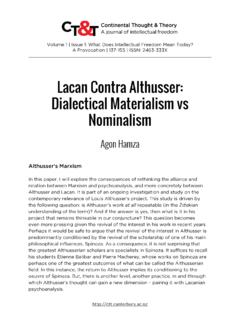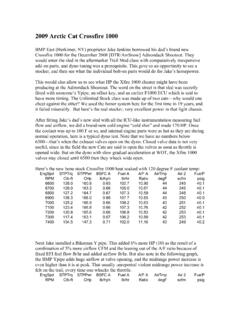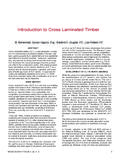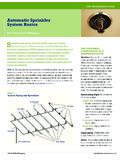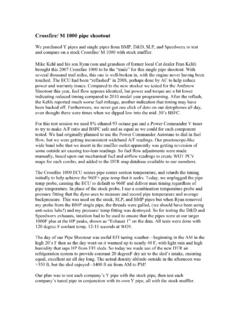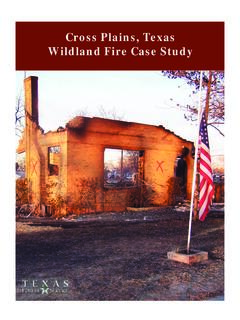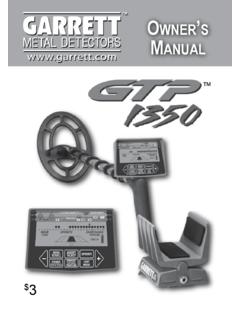Transcription of KingS Cross Fire in London Underground
1 King1S Cross fire in the London Underground November 18, 1987 A Report for Dr A. Buchanan Dept. of Civil Engineering Canterbury University by Deane McNulty and Philip Rielly March 1992 Table of Contents Topic Page summary (1) Introduction ( ) Setting the Scene .. 1 ( ) History of Fires in the Underground .. 1 ( ) Description of MH type Escalators .. 2 (2) The King's Cross fire -Nov 18, 1987 ( ) Timing of the fire .. 5 ( 2. 2) Scientific Investigations .. 8 ( ) Paint Testing .. 8 ( ) Ignition Testing .. 8 ( ) Numerical Modelling .. 9 ( ) Scale Testing .. 9 ( ) Safety-What Was Missing? .. 10 ( 3) Conclusions .. 13 (4) Acknowledgements .. 14 ( 5) References .. ~ . 14 Summary The Night That Luck Ran Out. The King's Cross tube station is one of the busiest and most complex in the London Underground network. In 1987, an average of 250,000 passengers were carried every weekday, with 100,000 in each of the peak periods 07:30 -10:00 and 16:00 -18:30.
2 Up until 18 November 1987, fire had only killed one person in London 's Underground since the Second World War. However, a serious fire in the Oxford Circus station in November 1984 prompted an independent report to criticise lax fire precautions. The report concluded by saying "luck has a habit of running out." At 19:45 on Wednesday, November 18, 1987, the luck of the London Underground ran out. It was the worst fire in the history of the London Underground , with 31 people dying and many more seriously injured. The fire began in a mixture of grease and debris which had accumulated on the running tracks of the Piccadilly line escalator number four during its entire operating life. It was later found that the escalator had never been completely cleaned since being installed in 1939. Ignition was attributed to a discarded match of a smoker, which fell between the tread and the skirting board of the escalator.
3 Even though smoking is banned in the Underground , passengers are known to light up whilst riding the escalators to the surface. For twenty minutes after ignition the fire grew only slowly, eye-witnesses suggesting that no one expected a major incident to result. At 19:45, disaster struck in a fraction of a second. During the flashover, eye-witnesses said a huge ball of flame shot from the throat of the escalator shaft across the ceiling of the booking hall. Then all was total darkness and searing heat, the electricity went off, and the whole concourse was shrouded in impenetrable smoke. In the following hours chaos and confusion reigned, both in the station and on the streets above. A full public inquiry was initiated by the then Prime Minister Margaret Thatcher. Beginning on February 2, 1988, the inquiry lasted about five months, the longest of its kind in British history. Our report contains research into several aspects of this event.
4 Included are conclusions of the official investigation into the cause of the fire behaviour. The investigation uncovered a previously unknown effect termed the "trench effect". We also cover the serious disregard to fire safety displayed by London Underground Limited. It is obvious that if better safety procedures had been implemented prior to the fire , on the night that luck ran out, every life at King's Cross station may well have been saved. (1) Introduction ( ) setting The Scene [1,2] The King's Cross area is the most intense centre of railway traffic in London . The Underground station is built at five different levels, with a labyrinth of passages, shafts and tunnels, including a subway which connects the Piccadilly and Victoria platforms to the Midland City Station. In 1987, the King's Cross Underground Station was the busiest station on the Underground network. On average 2 50, 000 passengers were carried every weekday, with 100,000 in each peak period 07:30 -10:00 and 16:00 -18:30.
5 The area of importance on the night of the disaster was the Tube Lines Ticket Hall (figure 1). There are two sets of escalators from the tube lines ticket hall, one serving the Northern and Piccadilly lines (where the fire started), and the other the Victoria line. In the ticket hall itself, a temporary hoarding had been erected across the right hand side of the ticket hall looking to the street from the Piccadilly escalator. This was to conceal from the public view workmen who were constructing a new station operations room. The hoarding had been painted with approved paint, but it also covered from view and access by people in the ticket hall the only fire hydrant and hose in the ticket hall area. Figure 2 shows the basic layout of upper and lower escalator machine rooms. Because of a history of fires on these escalators, they had been fitted with "water fog" spray equipment. It had been originally intended that these sprays be operated daily to dampen down any smouldering or burning escalator components.
6 The escalators were meant to be cleaned completely six monthly; in practice they were cleaned eleven monthly, and never completely enough to remove all the excess grease and detritus (fluff, dead matches, cigarette butts, & discarded tickets) from the escalator running tracks. ( ) History Of Fires In The Underground [1] London first began installing wooden escalators in its Underground system in 1911. A few years prior to this, in 1903, there was a severe escalator fire in a Paris Metro Underground station in which 83 people died. In a report on this fire , the Board of Trade recommended that wood in Underground stations be removed. Therefore the installations of wooden escalators in London was clearly a step backwards, although metal escalators were not available until the 1960's. On 24th December 1944, a particularly severe fire occurred in which all the escalators leading from Bakerloo line at Paddington station on the London Underground were completely gutted.
7 1 Following this fire , a review of escalator fires was performed. This stated that there had been 77 escalator fires in the period 1939 to 1944 and that MH, MA, and M type escalators were particularly prone to fire . The report attributed ignition to smokers material igniting accumulated dirt under the escalators. As a result of this report, the frequency of cleaning escalators was increased, and water fog equipment was fitted experimentally to 2 escalators. By 1948, water fog equipment had been fitted to a further 19 escalators, including those at KingS Cross station. During the 1960's, some of the wooden escalators in the London Underground network had the plywood balustrade panels and skirting boards replaced by metal. In 1966, the installation of smoke detectors at KingS Cross was estimated at costing 450 pounds, but these were never installed. Following this in 1976, smoke detection systems were fitted to a new escalator in Baker Street station as a trial.
8 They were considered to be unreliable, and were therefore not generally adopted elsewhere. In the period of 1956 to 1988, London Underground records showed 400 fires had occurred on escalators. Some of these were classified as only "smoulderings", but were in fact serious enough to cause evacuations of stations, serious delays, and considerable damage to the escalators involved. Statistics of these fires indicated that 45% occurred on MH type escalators. It was apparent that these MH type escalators were particularly prone to fires on their running tracks. Of these fires, 46 were reviewed, with results showing that the established or attributed cause of fire was : Smokers material 32 Electrical 8 Friction 1 Unknown 5 The investigation conducted into the KingS Cross fire found that the "keeping and analysis of statistics on fires by London Underground was quite unsatisfactory." ( ) Description Of MH Type Escalators [1] During the period 1931 to 1961, a total of 108 'M' series escalators were installed on the London Underground network.
9 The MH type machines were designed as special purpose machines for high rises and heavy traffic. They had~ maximum rise of and were designed for speeds between 30 and 35 metres per minute. All 'M' series machines (with the exception of MY type) were similar in appearance with wooden balustrading, decking, side panels, cleated steps, and risers. (figures 3 & 4) The escalator steps are metal backed plywood with maple wood cleats. At each side of the step is a metal " fire cleat", a tray which covers the 2 gap between the step and the skirting board. This gap may vary with running chain adjustment, but may be as much as 15mm. The purpose of these trays is to prevent cigarette ends and matches falling through this gap. On the KingS Cross escalators, about one third of these cleats were missing. Many of these MH type escalators were still in use in 1989. The three MH type escalators in KingS Cross between the ticket hall and the Piccadilly line were installed in 1939.
10 They were inclined at 30 and had a rise of Figure 2 shows a longitudinal section of the escalator in its shaft, including the upper and lower machine rooms and layout of water fog spray nozzles. The upper machine room houses the : -electric drive motors -worm reduction gears -chain drives to the driveshaft for each of the escalators -electrical control gear -circuit breakers connecting motors to mains supply -water fog controls The water fog equipment consists of pairs of sprinkler heads spaced at about 2m along the length of the escalators. The sprinkler heads are located each side of the centre line of the escalator with one of each pair pointing up towards the underneath of the steps, and the other downwards on the returning idle steps. The handrail driving gear is sprayed at the top of the escalator, and is controlled by a totally separate system. The original intention of the water fog equipment was for it to be operated for a short time each night to dampen down any smouldering or burning escalator components.
